In last post of this series we learnt how to install vCenter with embedded PSC on windows server.
In this post we will learn about deploying and configuring vCSA with embedded PSC.
If you have missed earlier post of this series, you can read them from below links:
1: Installing and Configuring ESXi
3: vCenter Server and PSC Deployment Types
4: System Requirements for Installing vCenter Server
5: Installing vCenter Server on Windows
In vSphere 6.5 VMware has made the installation of vCenter appliance a lot easier than before. Earlier, deployment of vCSA needed client integration plugin to be installed on your system and the deployment was done through a browser. Client integration plugin had multiple compatibility issues. Now with vSphere 6.5 client integration plugin is no longer required. The deployment is going to be via an ISO which would have an installation wizard that can be executed on Windows, MAC or Linux.
The vCenter Server Appliance consists of a 2-stage deployment.
1. Deploying vCSA 6.5
2. Configuring vCSA 6.5
Since vSphere 6.5 is now GA, vCSA can be downloaded from here. Download the vCSA iso on any of the machine which can communicate with your existing virtual infrastructure and navigate to directory ‘vcsa-ui-installerwin32’ and click on installer exe to launch the deployment wizard.
1: Click on install button to start the wizard.

2: The deployment wizard will tell you that there are two steps involved in the installation. The first step will deploy a vCenter Server appliance and the second step will be configuring this deployed appliance.
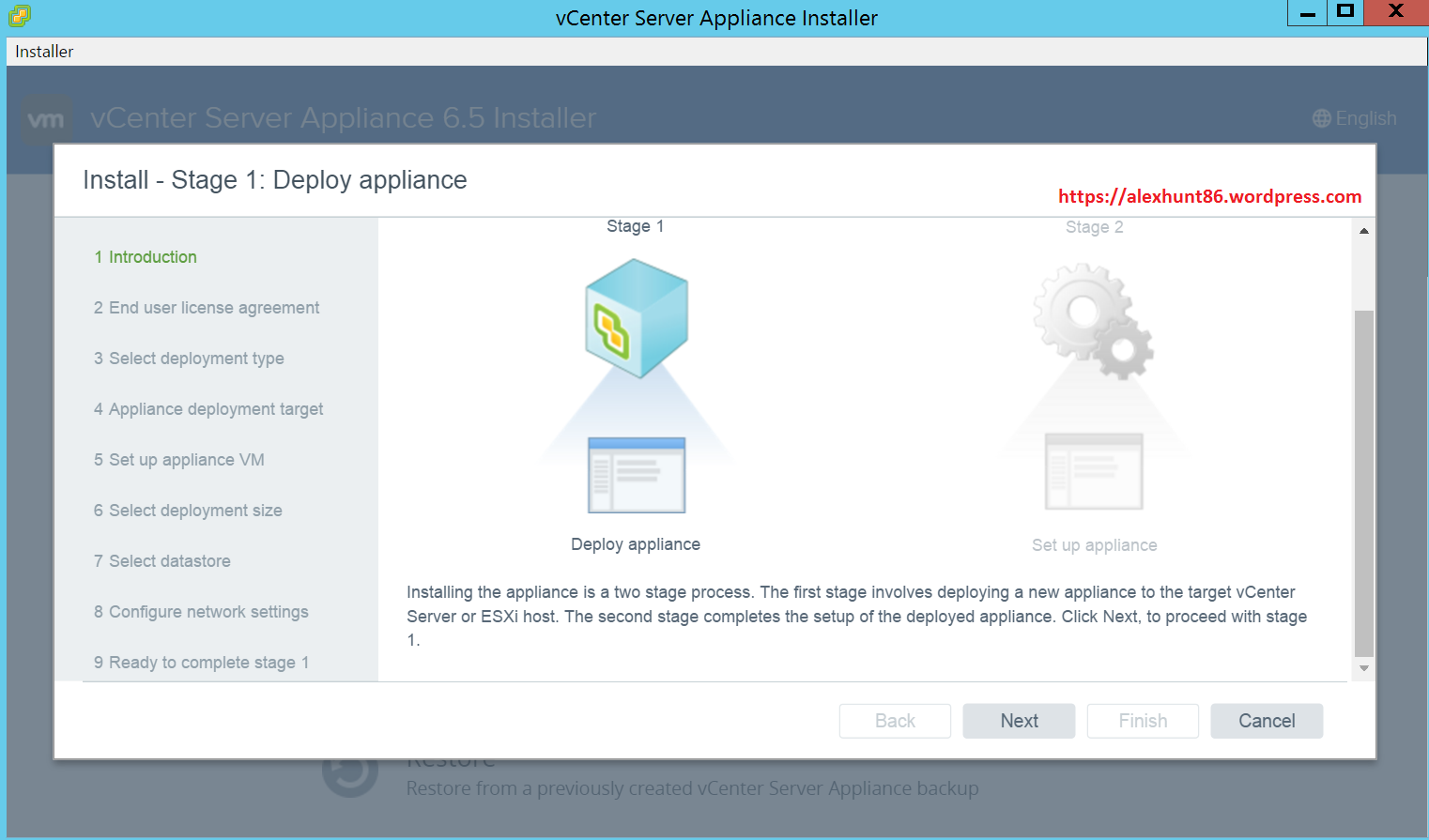
3: Accept EULA and hit Next.

4: In the deployment type choose the one which suits your need. If you want to know more about available deployment type and requirements, you can read this article which I posted earlier.

5: Next is to choose the target for deployment. You can either choose Esxi host as target or any existing vCenter server. In my lab I already have a windows based vCenter server and I choose that as target.
Note: If you select Esxi host as target, provide username as root and password of Esxi host. With vCenter you can chose a windows account that have access to vCenter server.

6: Accept the thumbprint of the SSL certificate presented.

7: Select the folder where you want to deploy vCSA and hit next.

8: Chose cluster/host where vCSA will be deployed and hit next.

9: Provide a name for the vCenter appliance VM and set the root password.
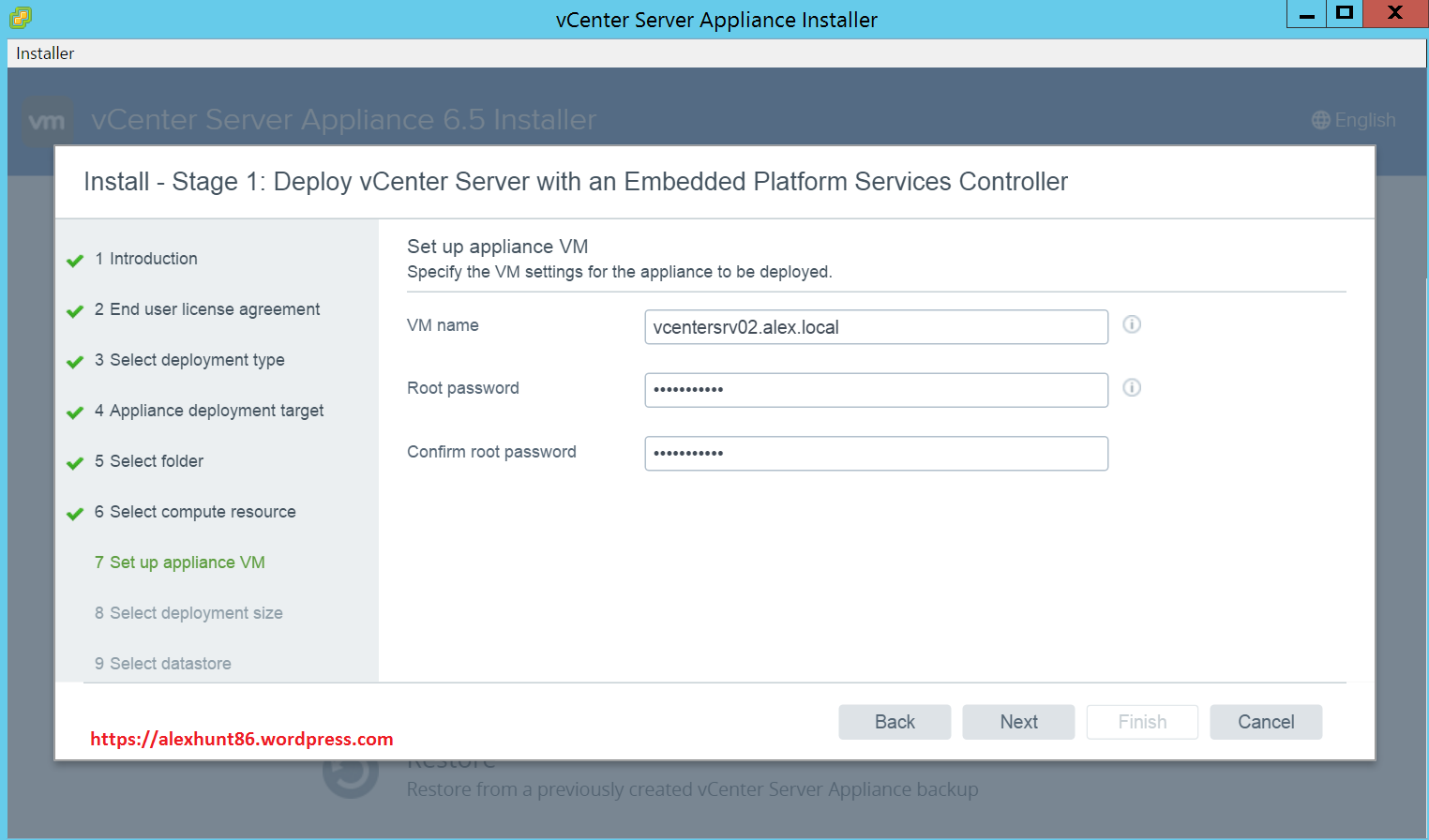
10: Based upon your environment size, select the sizing of the vCenter appliance.
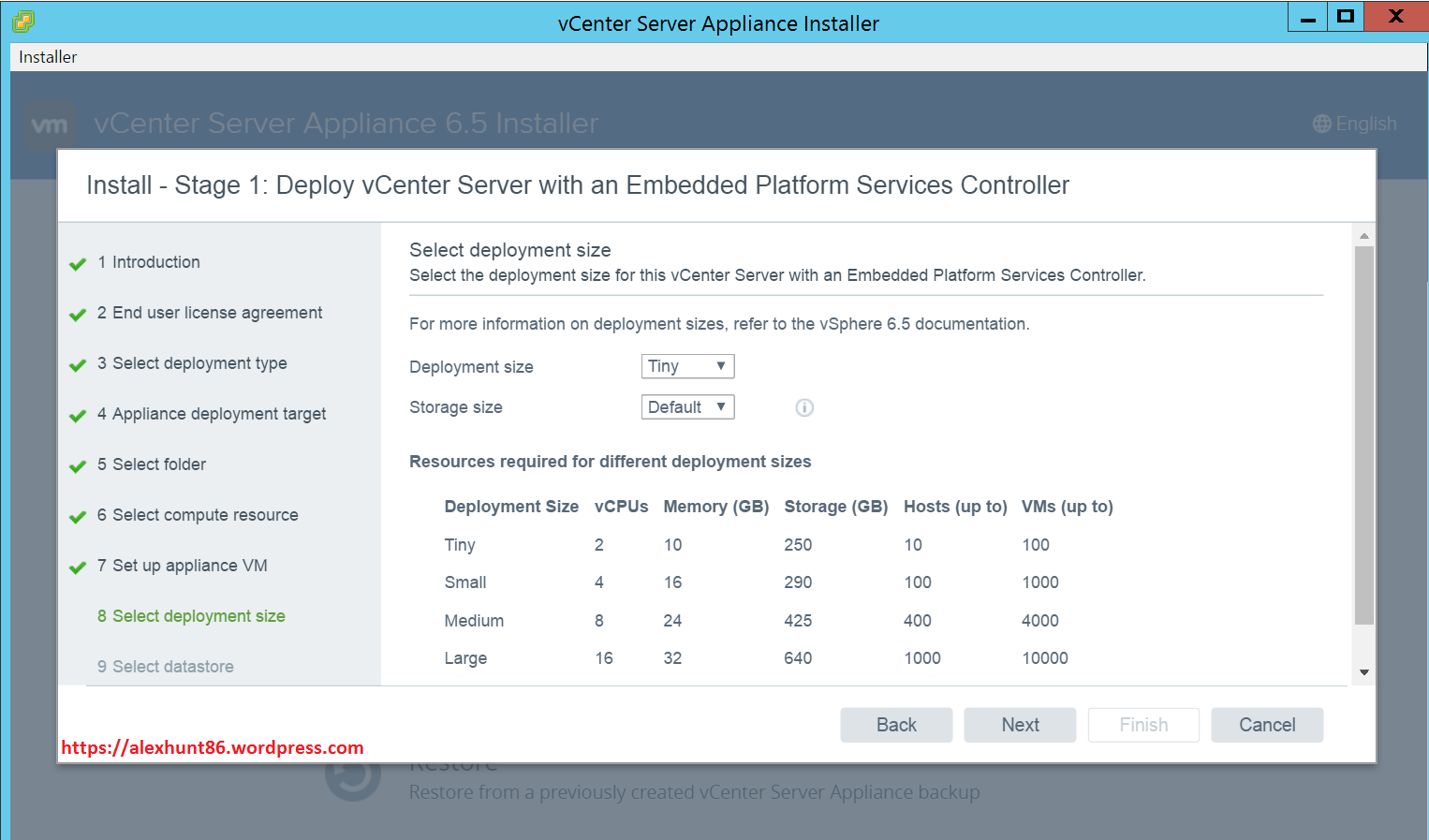
11: Select the destination datastore where appliance will be deployed and hit next. You can chose to deploy appliance in a thin provisioned mode by checking the box “Enable Thin Disk mode’

12: Configure the networking of vCenter appliance. Make sure to use a valid IP which can be resolved both forward / reverse prior to this to prevent any failures during installation.
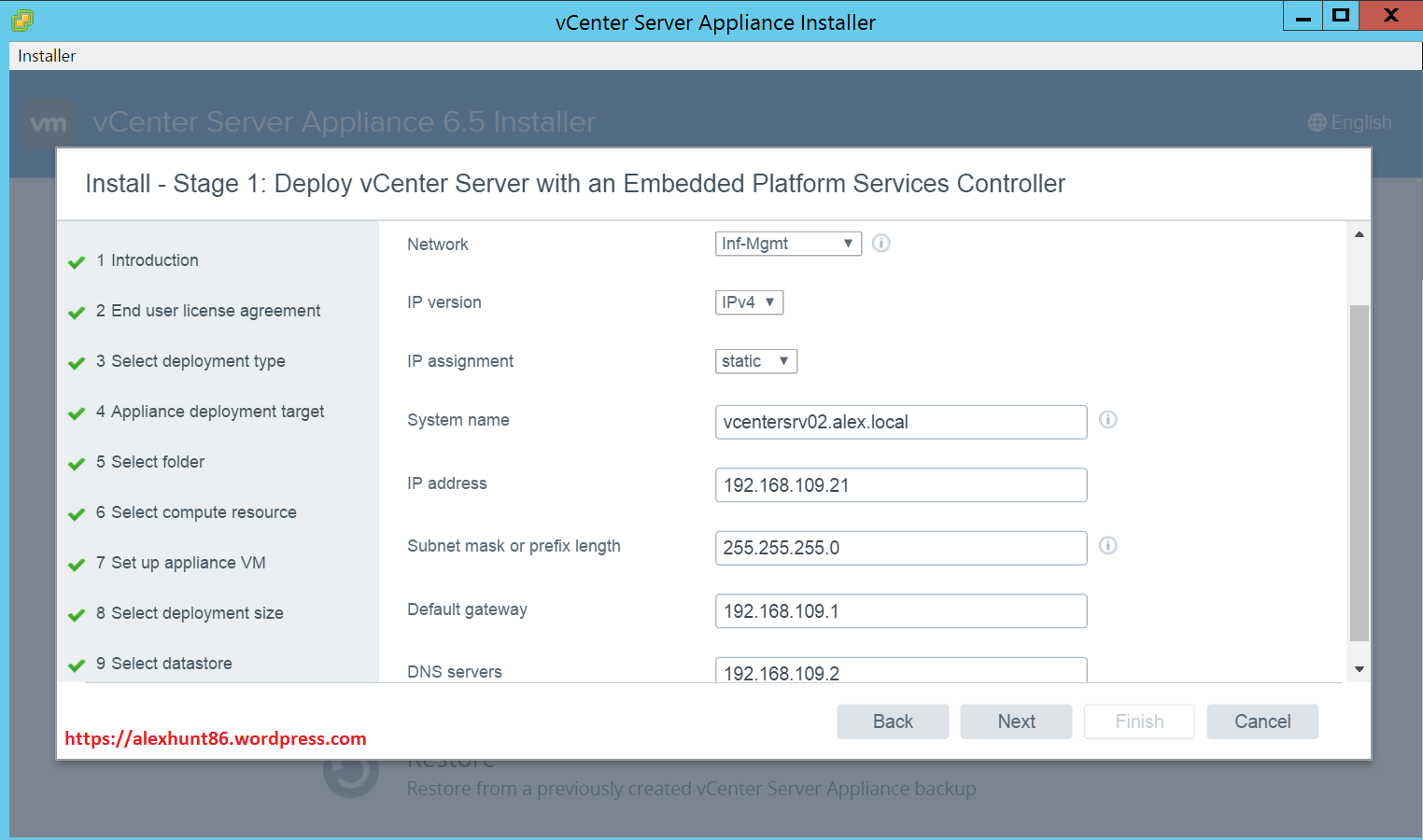
13: On ready to complete page, review your settings and hit and finish to start the deployment.
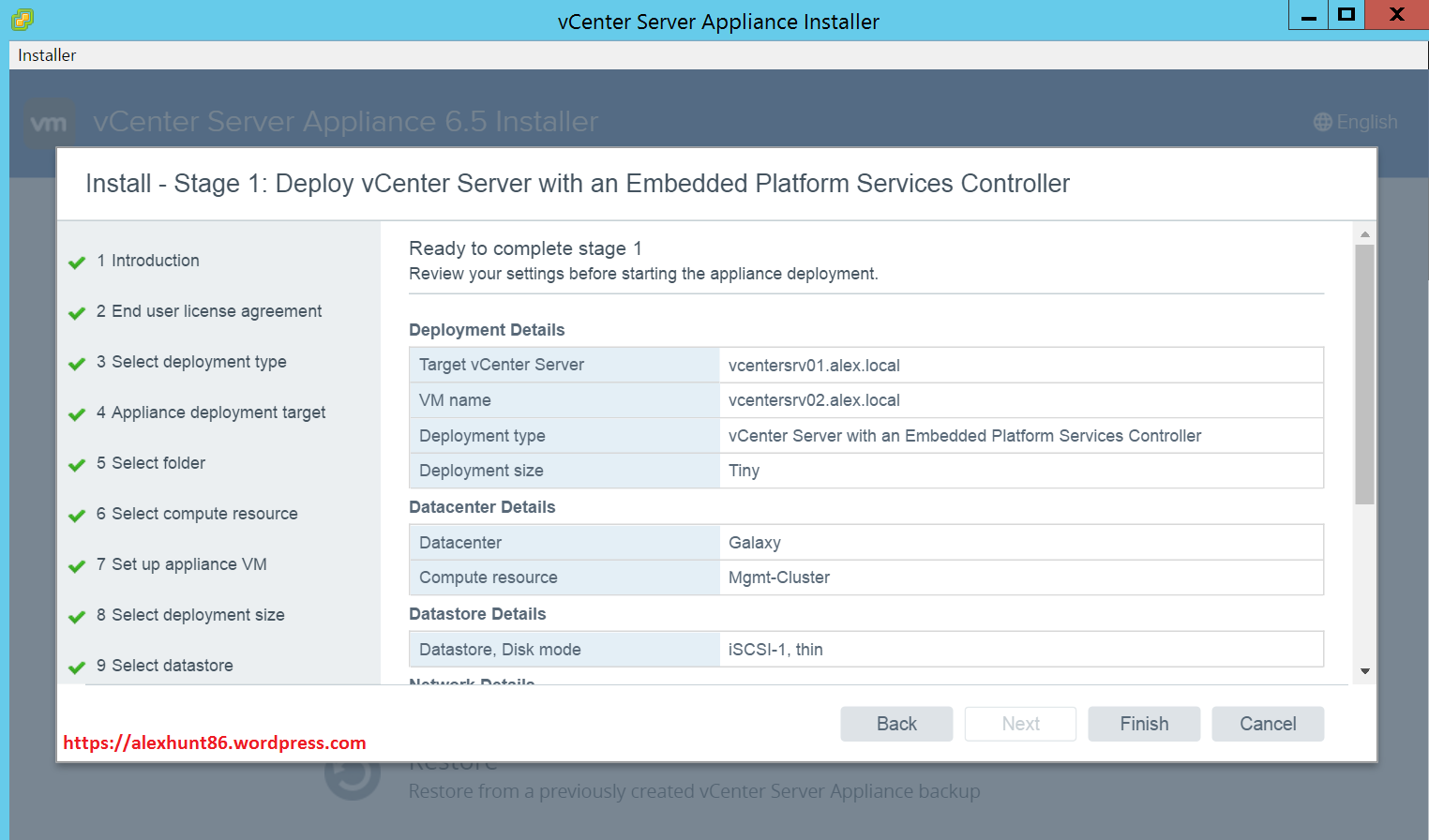
14: Let the wizard complete first phase of installation.
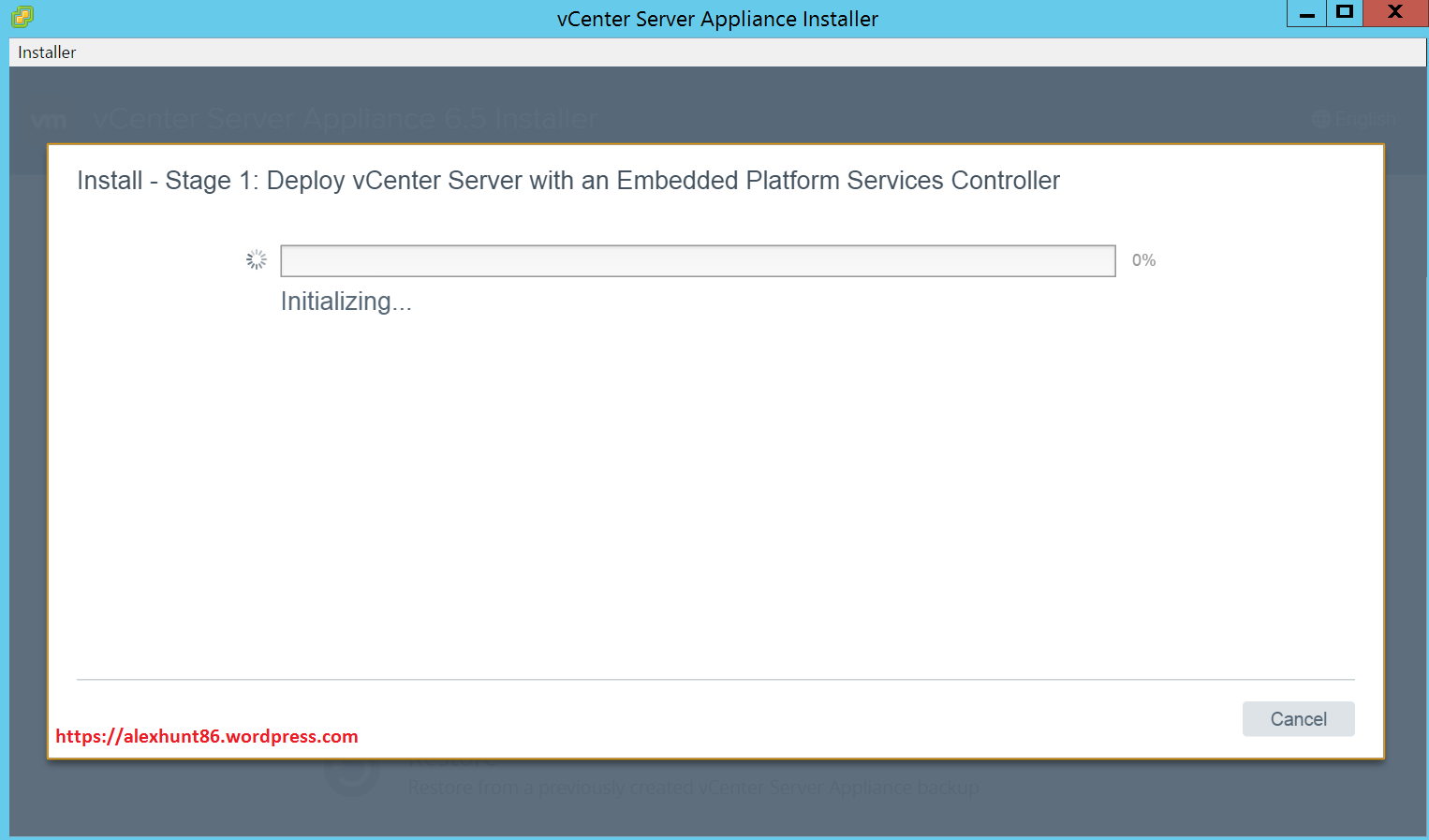
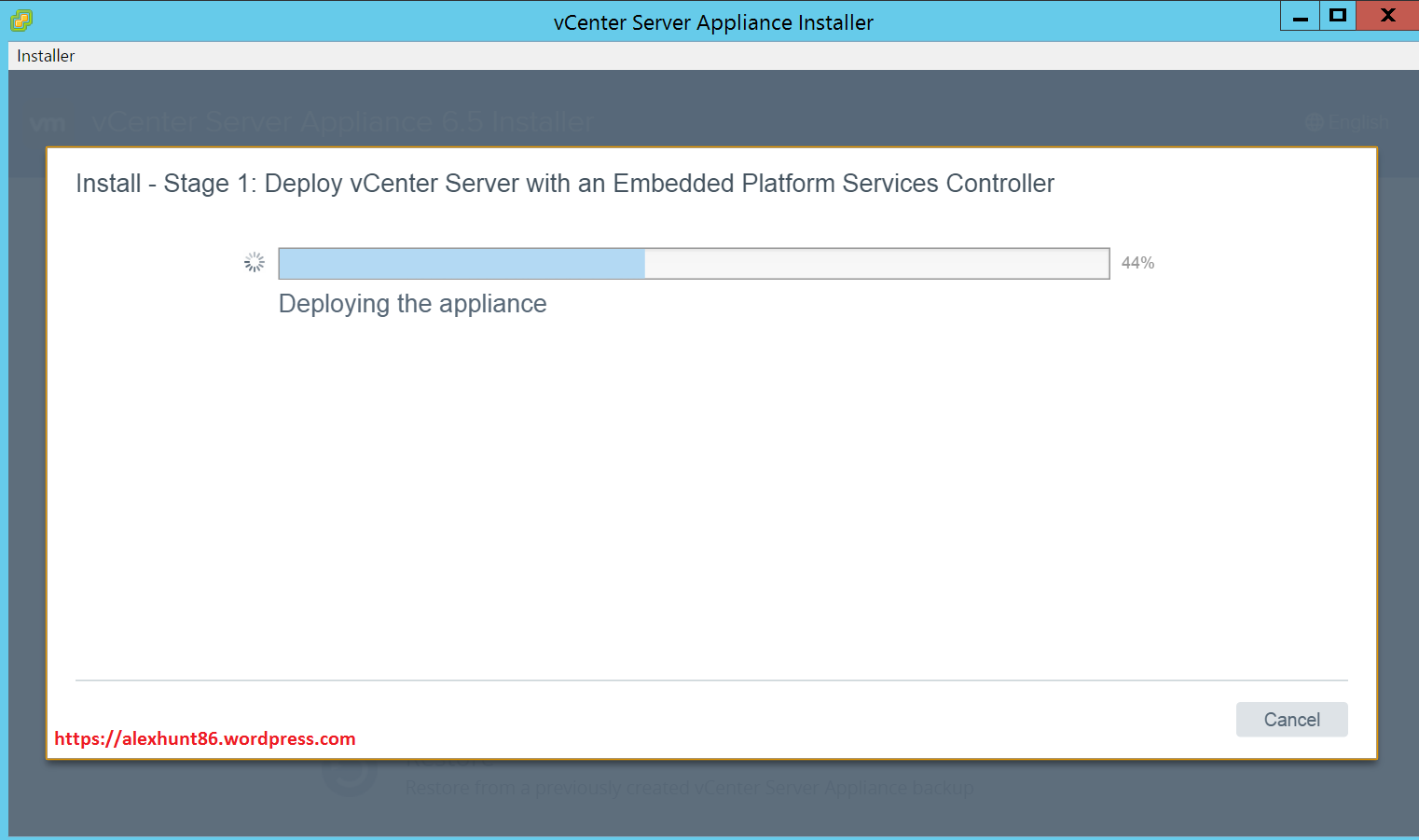

14: If you have chose existing vCenter as target during deployment, you can watch the deployment progress there.
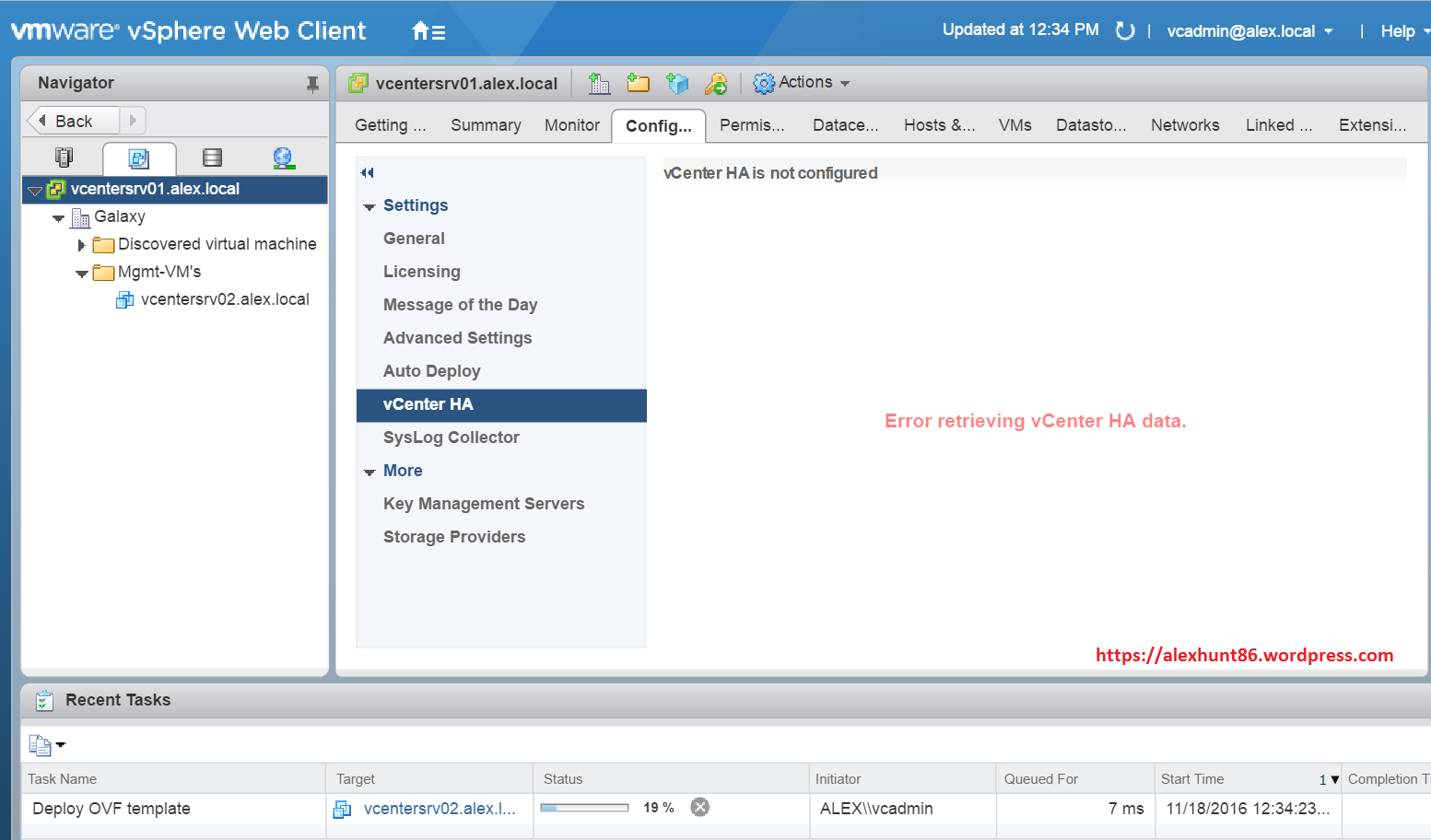
16: Hit continue to begin second phase of deployment once phase 1 of deployment is completed.
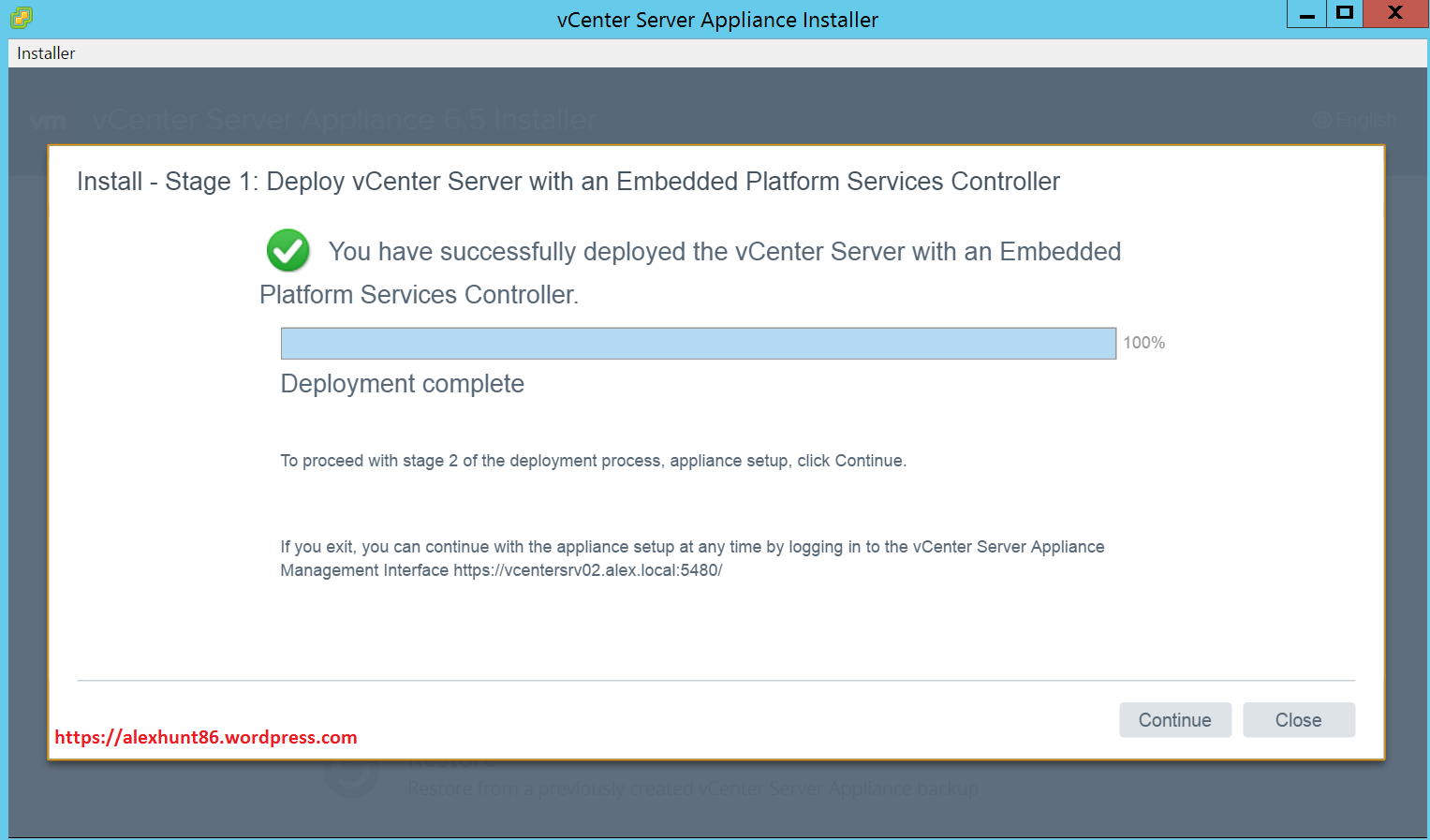
17: Hit Next to start with phase 2 of deployment i.e configuring vCSA.
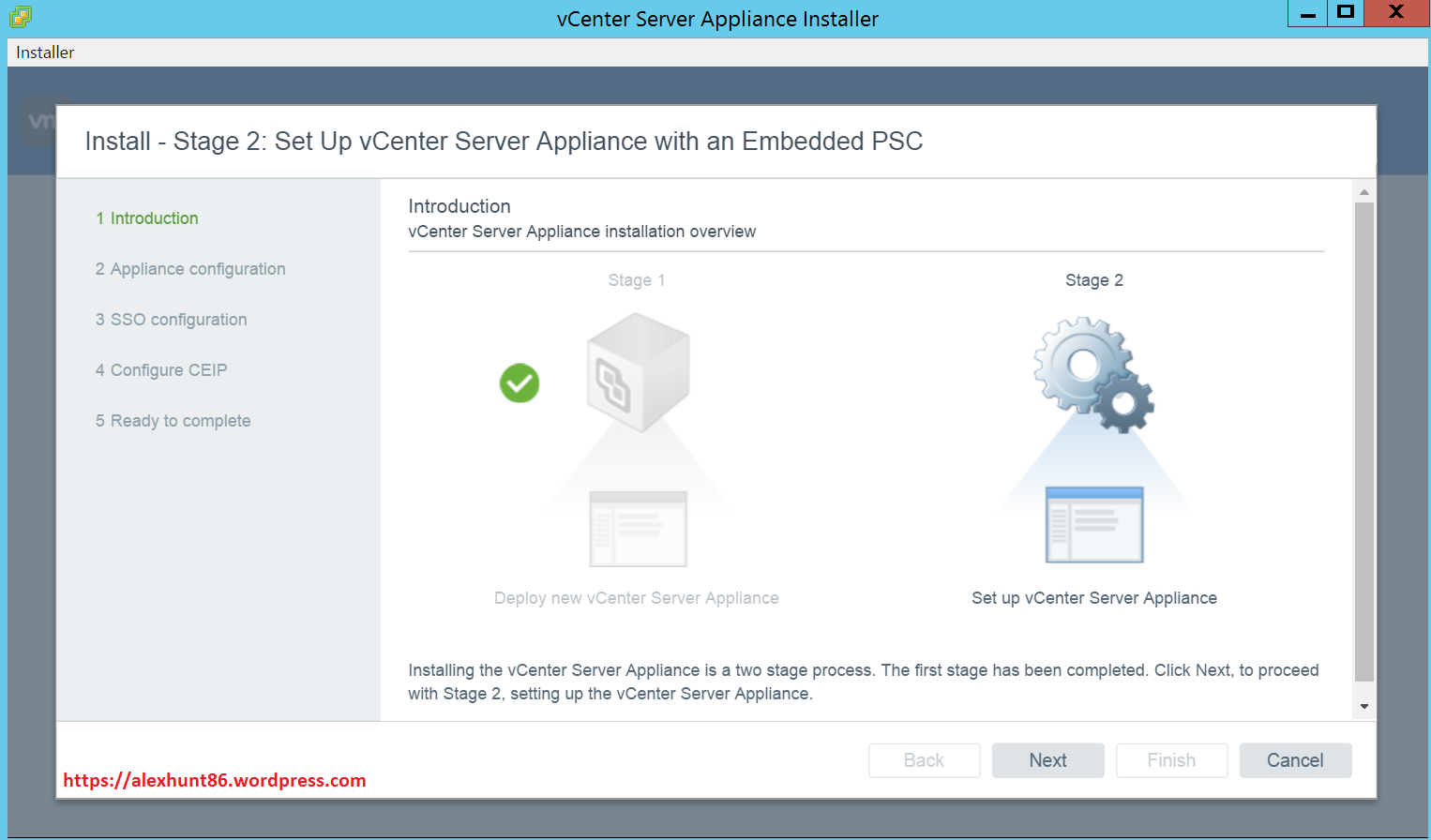
18: The first option that appears in phase 2 is to configure NTP settings for the appliance and enable SSH access.
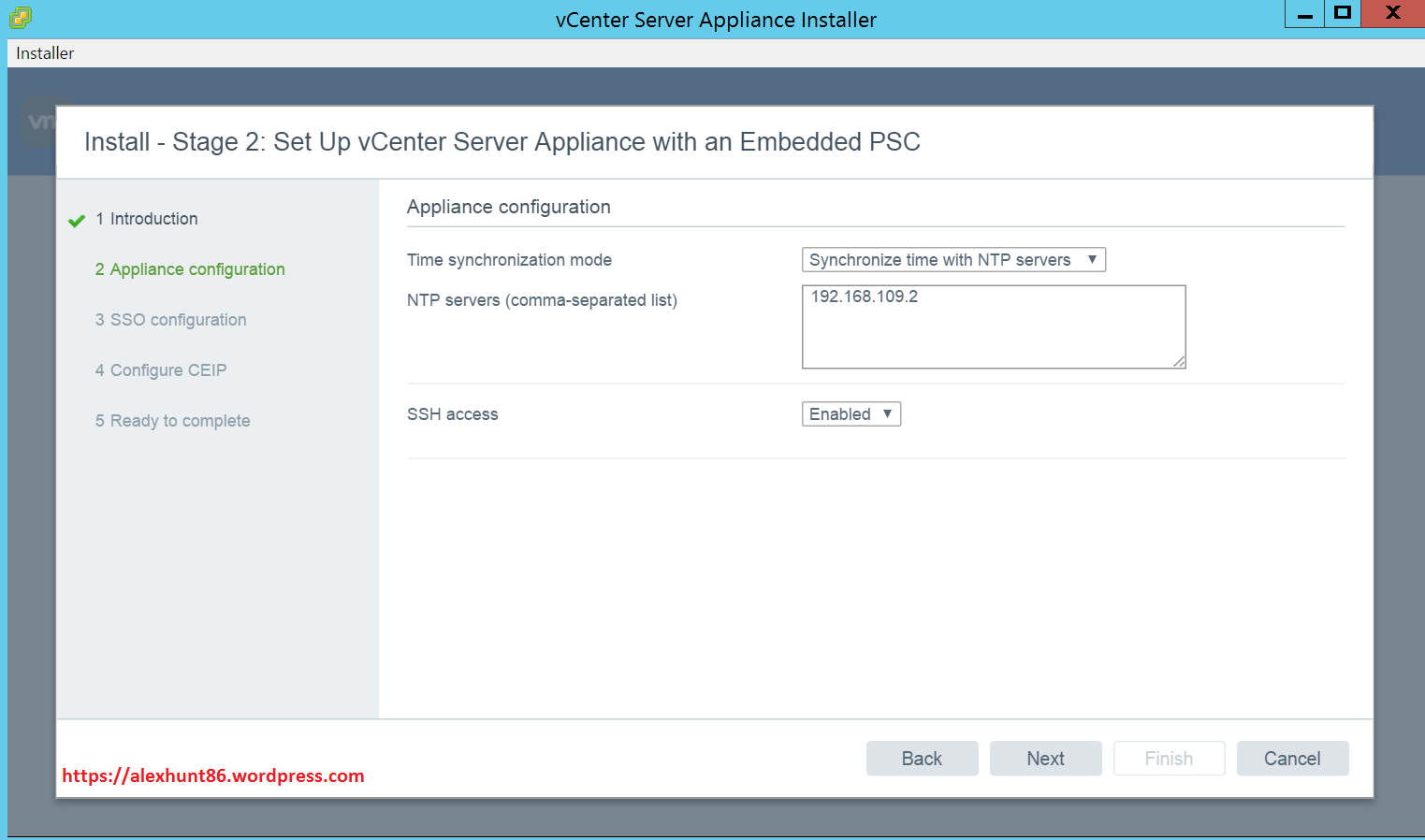
19: Next we have to define the SSO domain name, the SSO password and the Site name for the appliance.
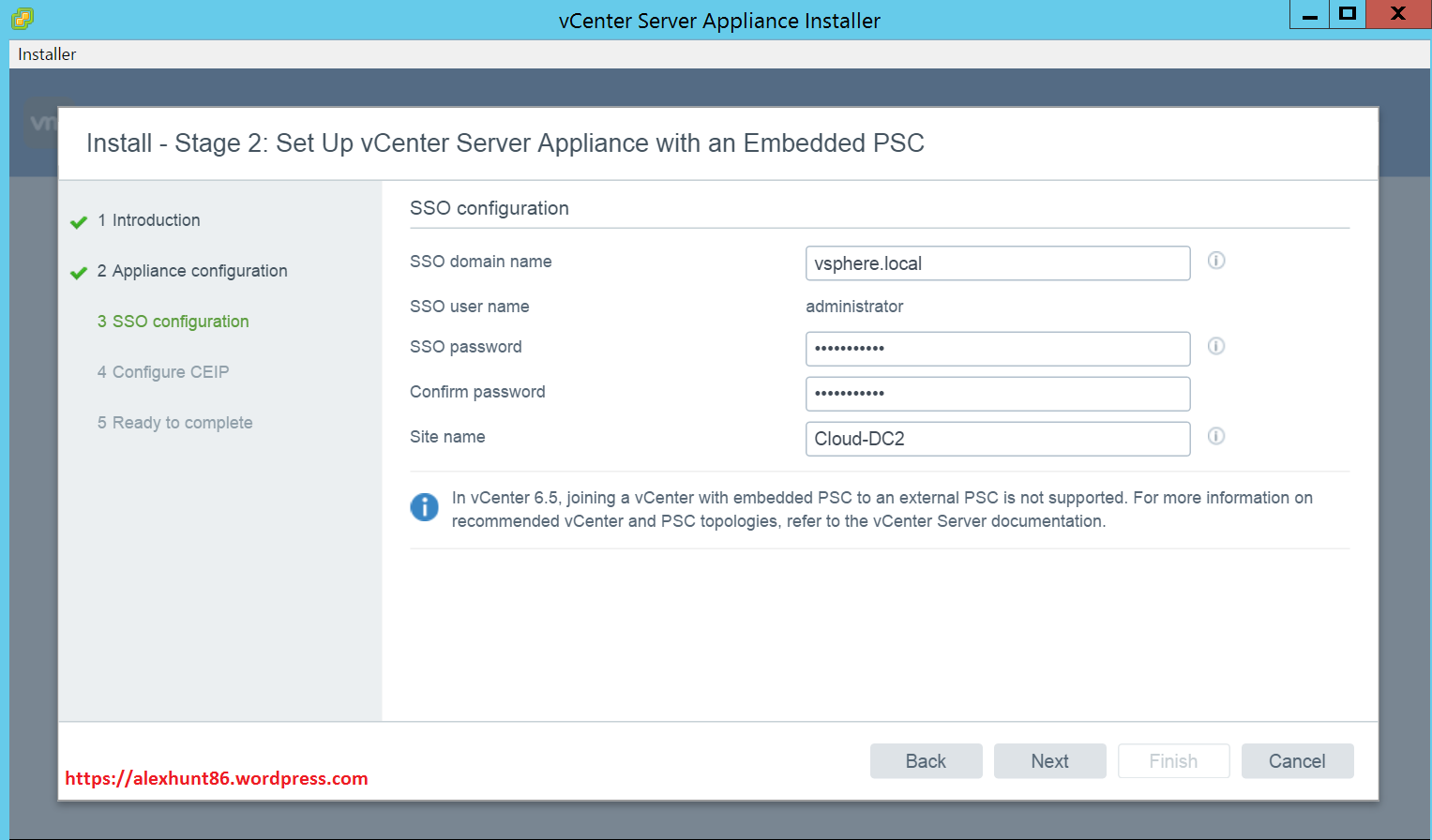
20: If you would like to enable Client Experience Improvement Program, you can do so, else you can skip and proceed to completion.

21: On Ready to Complete page, review your settings and hit finish to start the phase 2 of deployment.
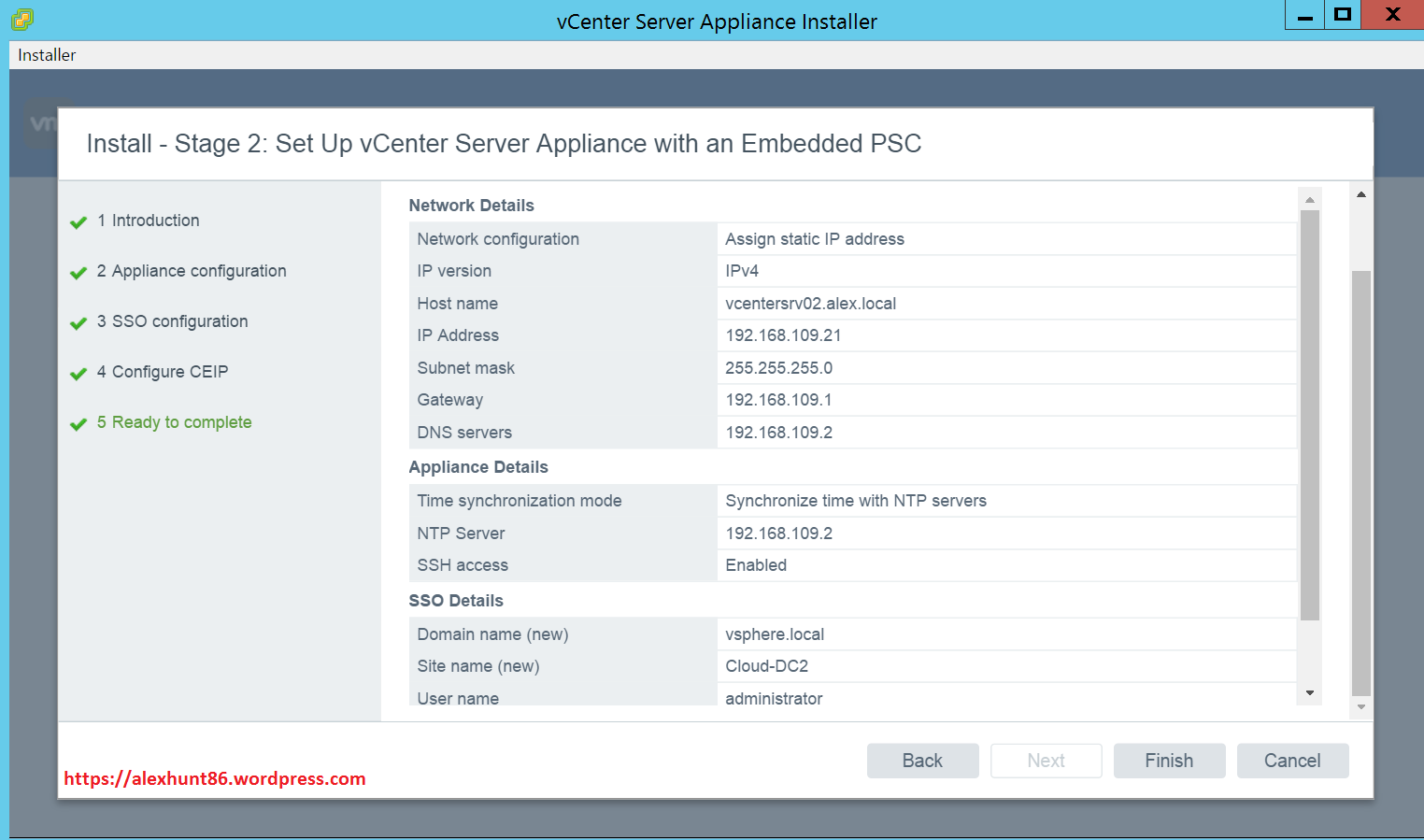
At this point the deployment wizard gives you one more chance to review your settings by clicking cancel. Hitting OK will trigger the appliance configuration as per your selections made above.

22: You can sit back and relax now and let the wizard do the magic. It will take 5-7 minutes typically for configuration to finish.

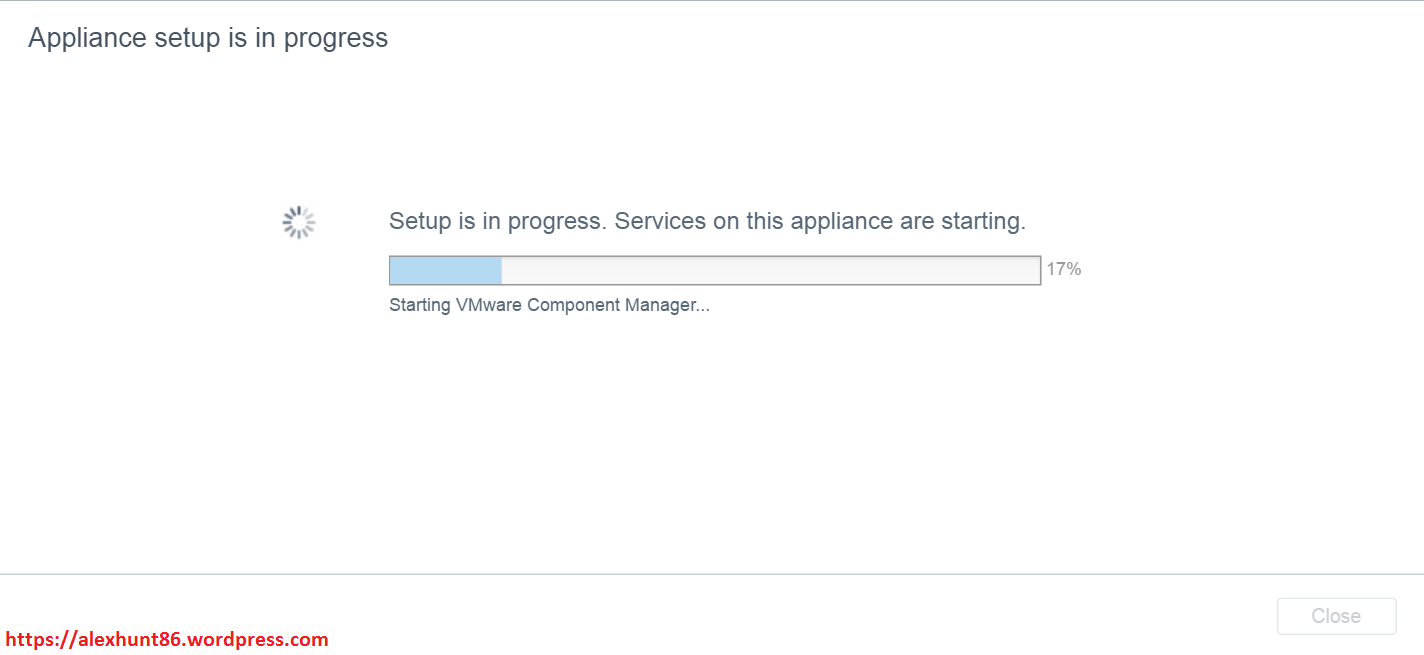
23: Post completion of deployment, hit close. You can manage the appliance now by opening URL https://vcsa_fqdn:443/vsphere-client/
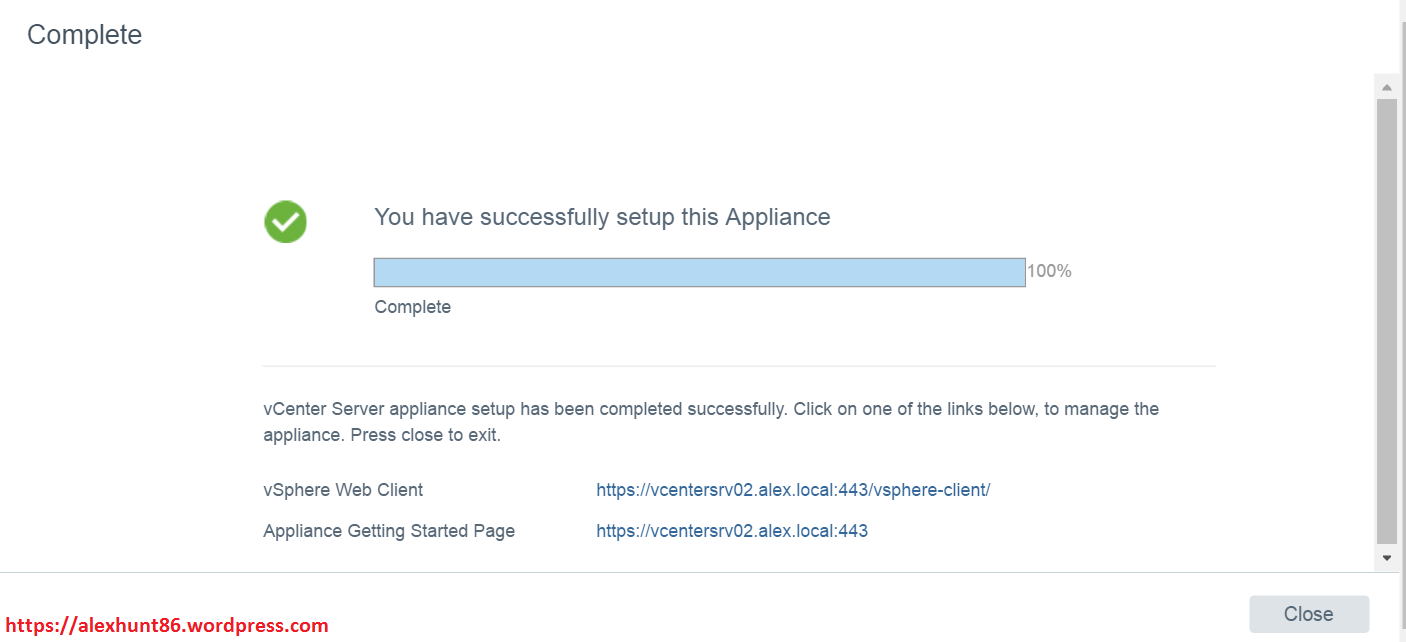
24: Login to appliance using user@sso_domain_name and password
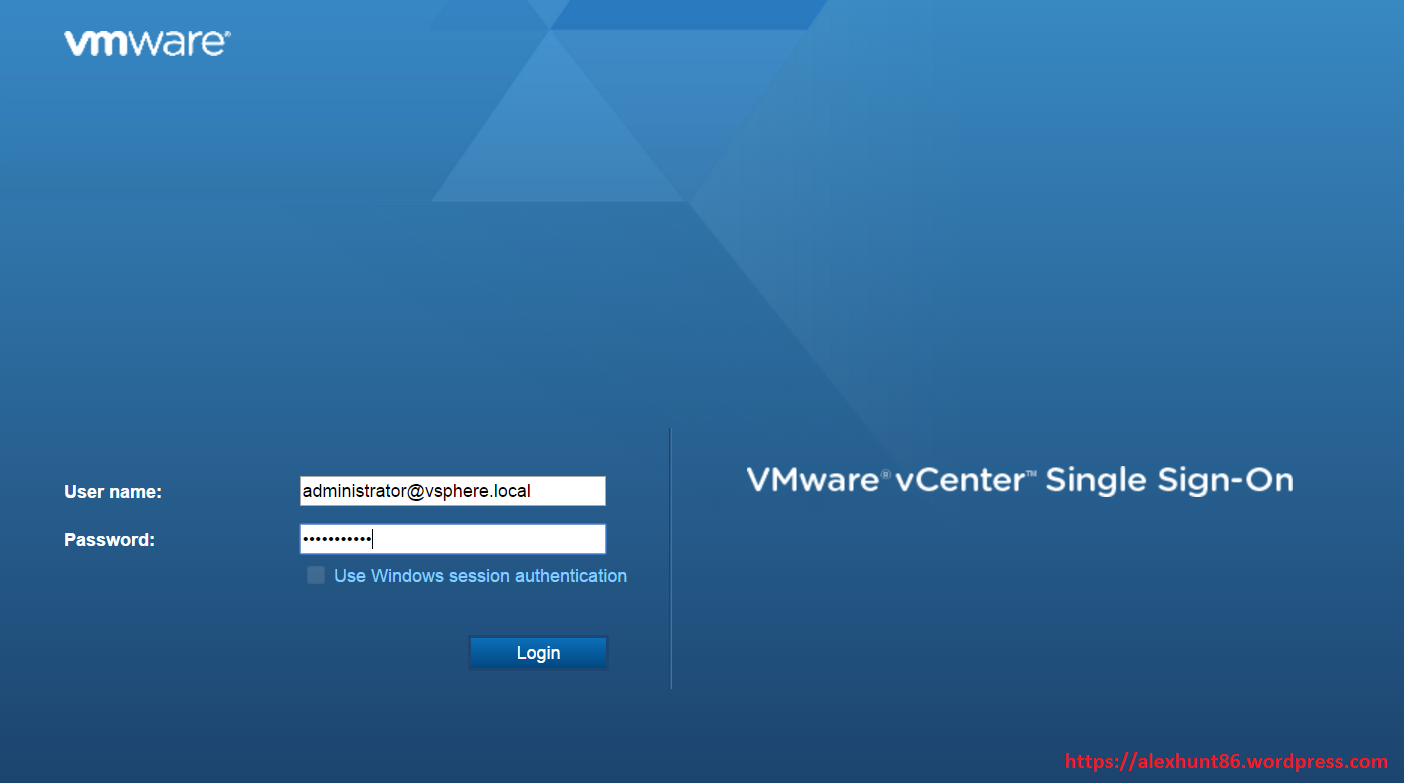
25: On logging in, you will be presented with a warning message that your vCenter server needs to be licensed. You can go ahead and assign the license immediately or can dismiss the message if your are planning to use vCenter in evaluation mode or will apply license later.
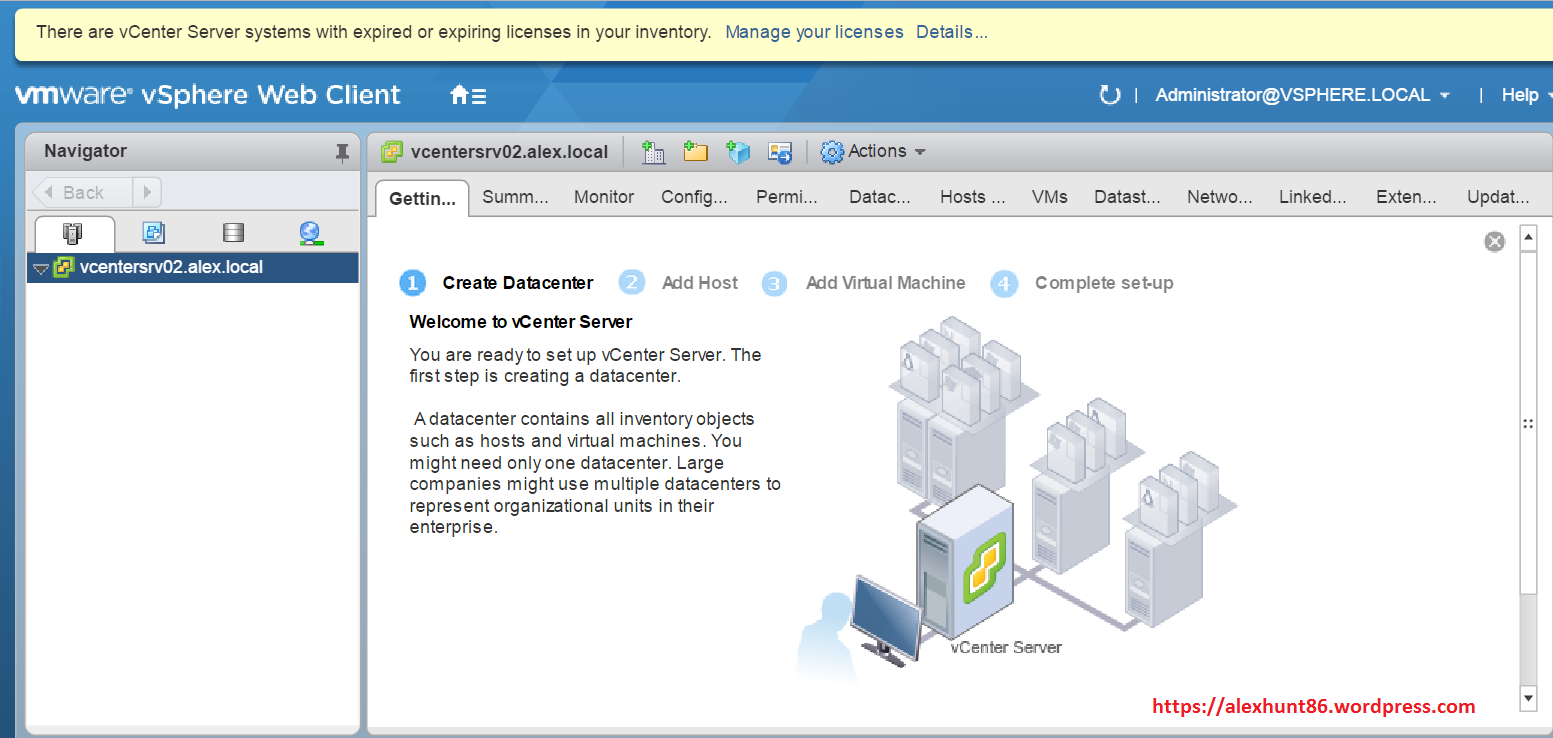
26: The next thing you wanna configure is to make vCSA part of your company’s domain so that domain users (vsphere admins) can access vCenter using their own credentials. You can do so by clicking on “System Configuration” within home page.
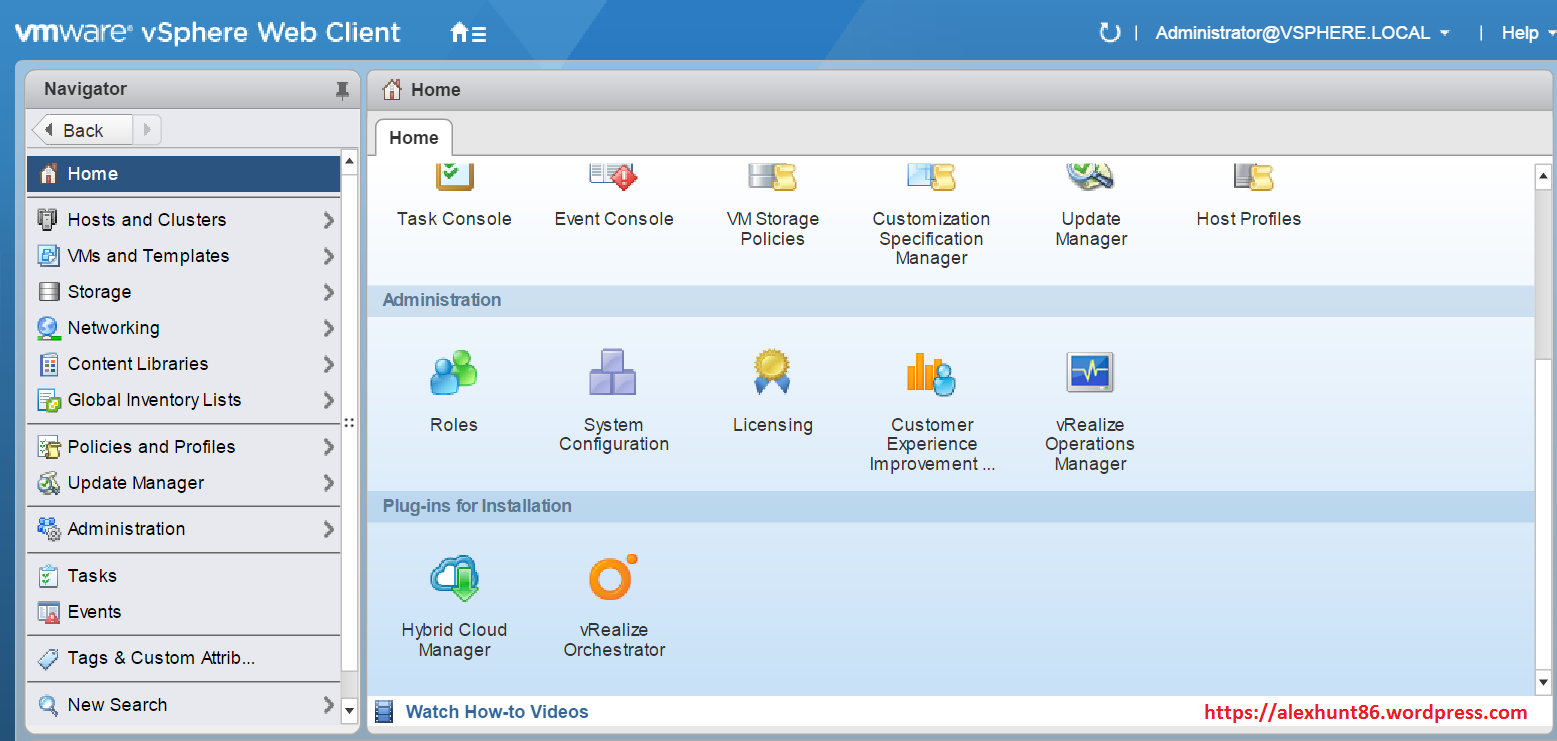
27: Select Nodes and select your vCSA and click on Manage tab. Under settings page,select Active Directory. Click on Join button to supply your domain information.
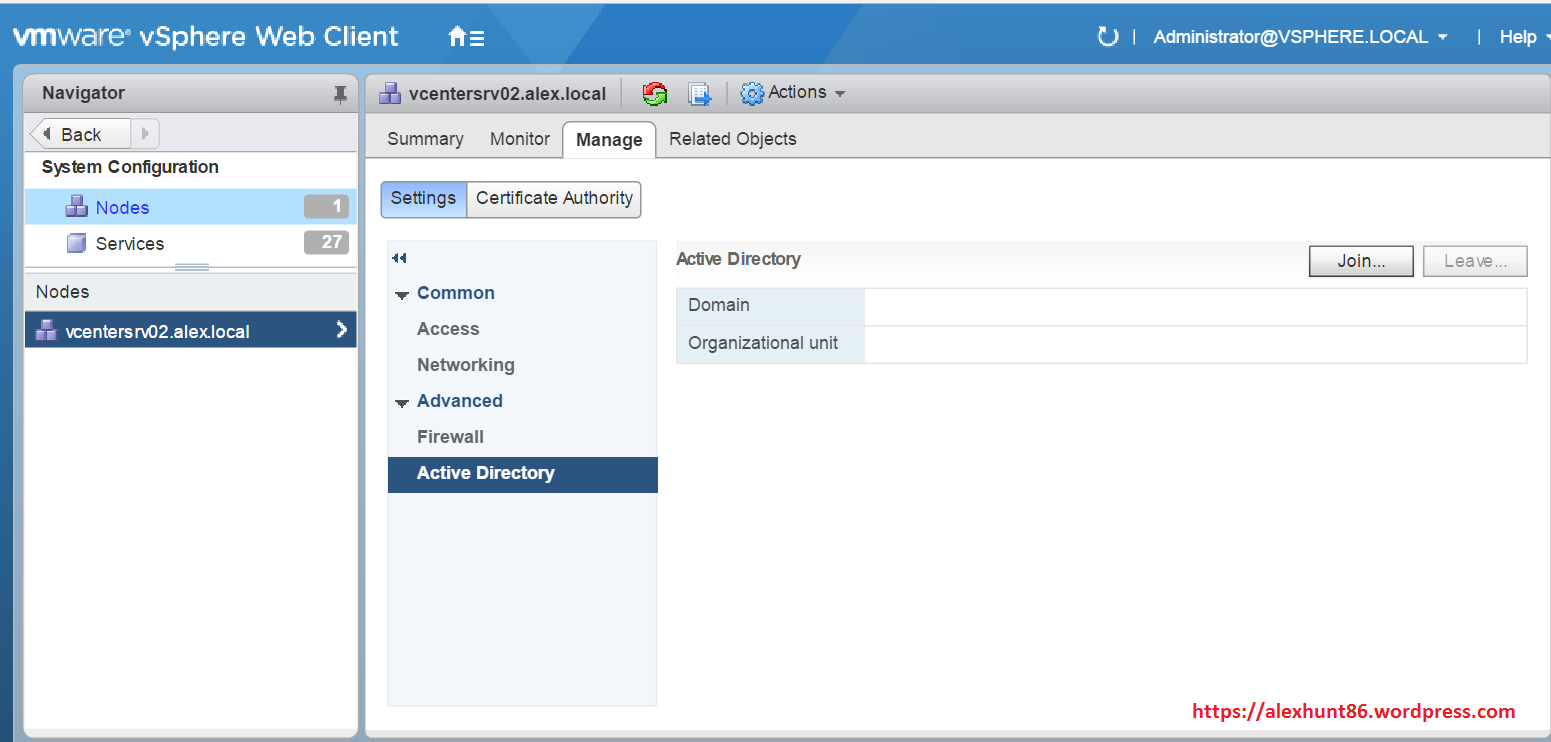
28: Define your domain name and a user using which vCSA will be attached to domain. The username is preferred to be a service account. Wizard will warn you that a reboot is required post adding vCSA to domain for changes to take effect.
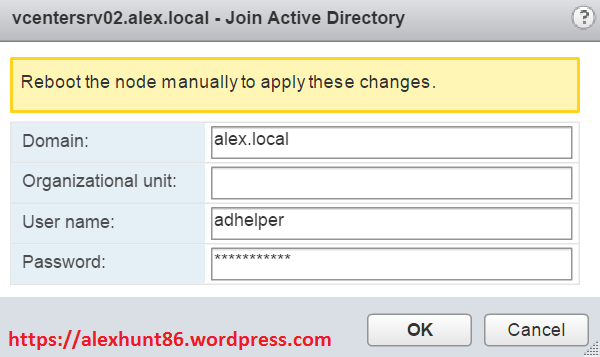
29: To reboot, right click on the vCenter and select reboot.
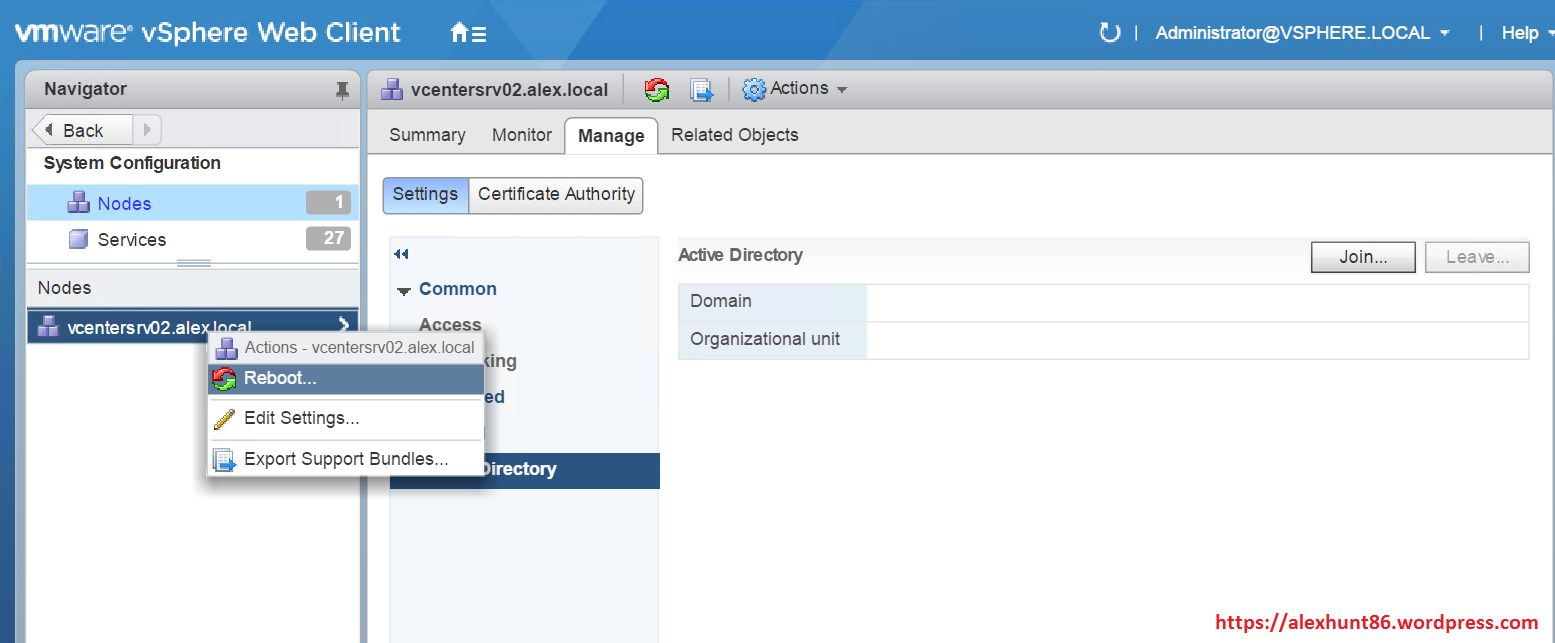
30: If you wish you can provide a reason for why you are rebooting the appliance.
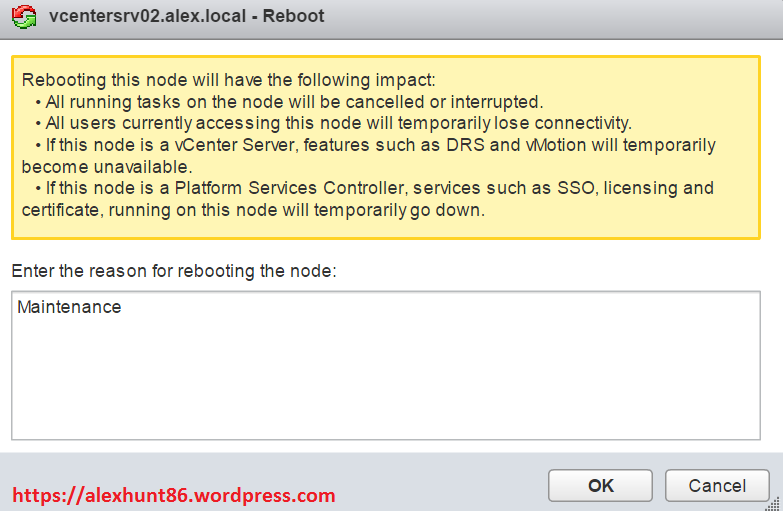
31: Post reboot of appliance, you can verify that its now joined to the domain.

32: If at this point you are hoping that you can now login to vCSA using your Active directory account, you are wrong. We have not yet finished the configuration.
Next step in this is to define the identity source for your appliance. From home page go to Administration > Configuration. Click on green ‘+’ button to add an identity source.

33: Select the identity source type. I have my domain running as AD in windows.
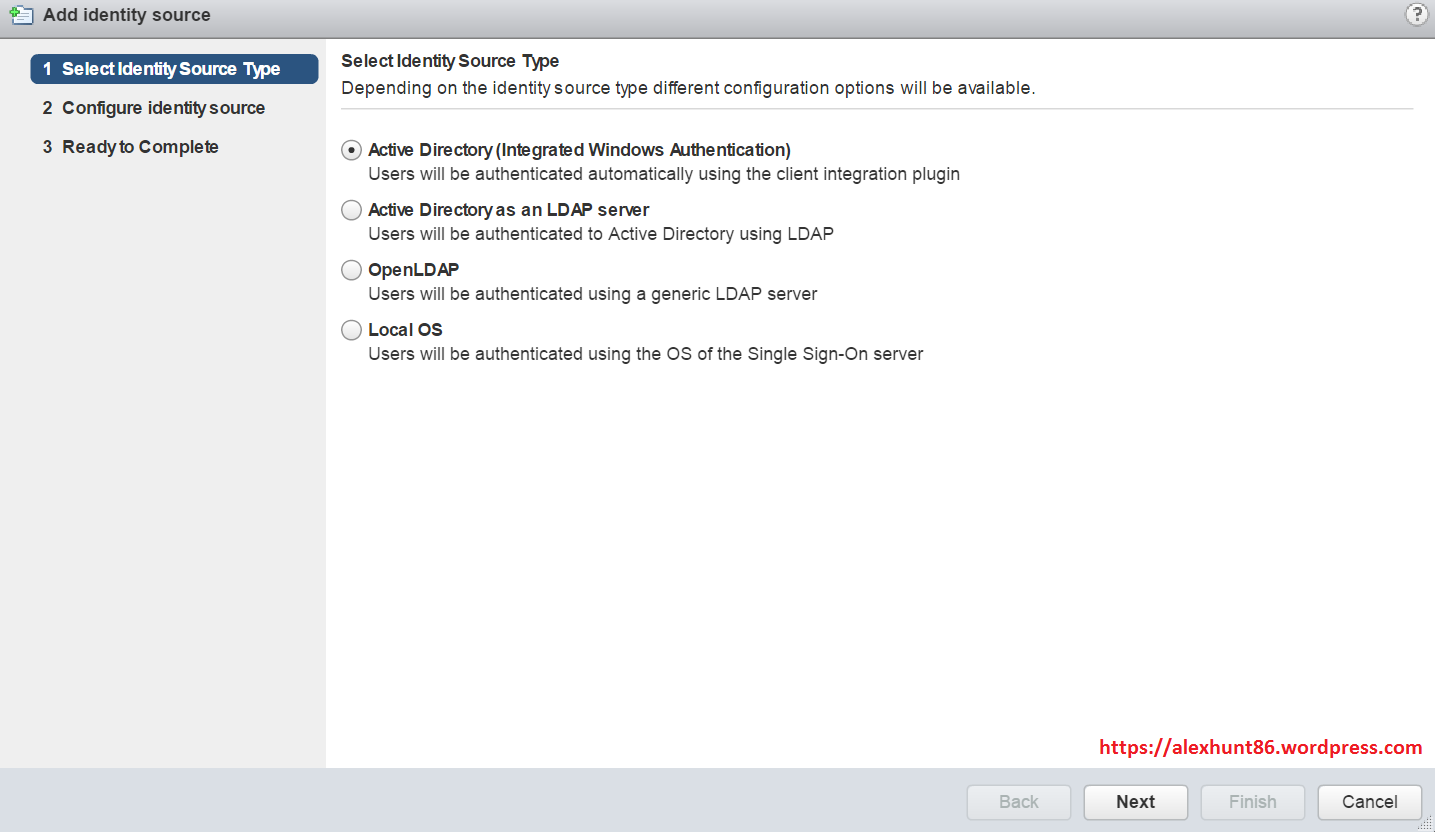
34: Provide the domain name here and chose use machine account and hit next.
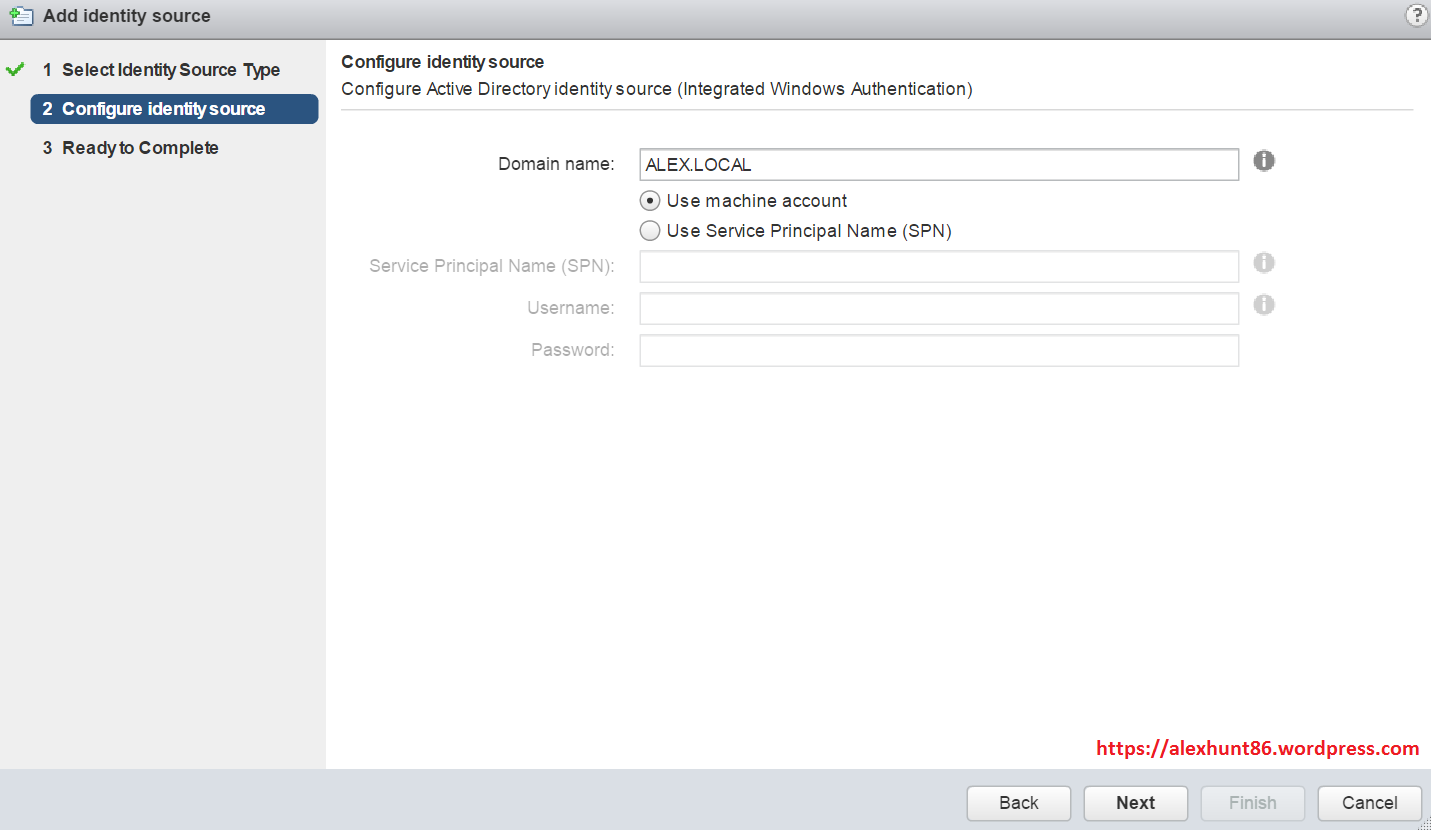
35: Hit finish to complete adding identity source.
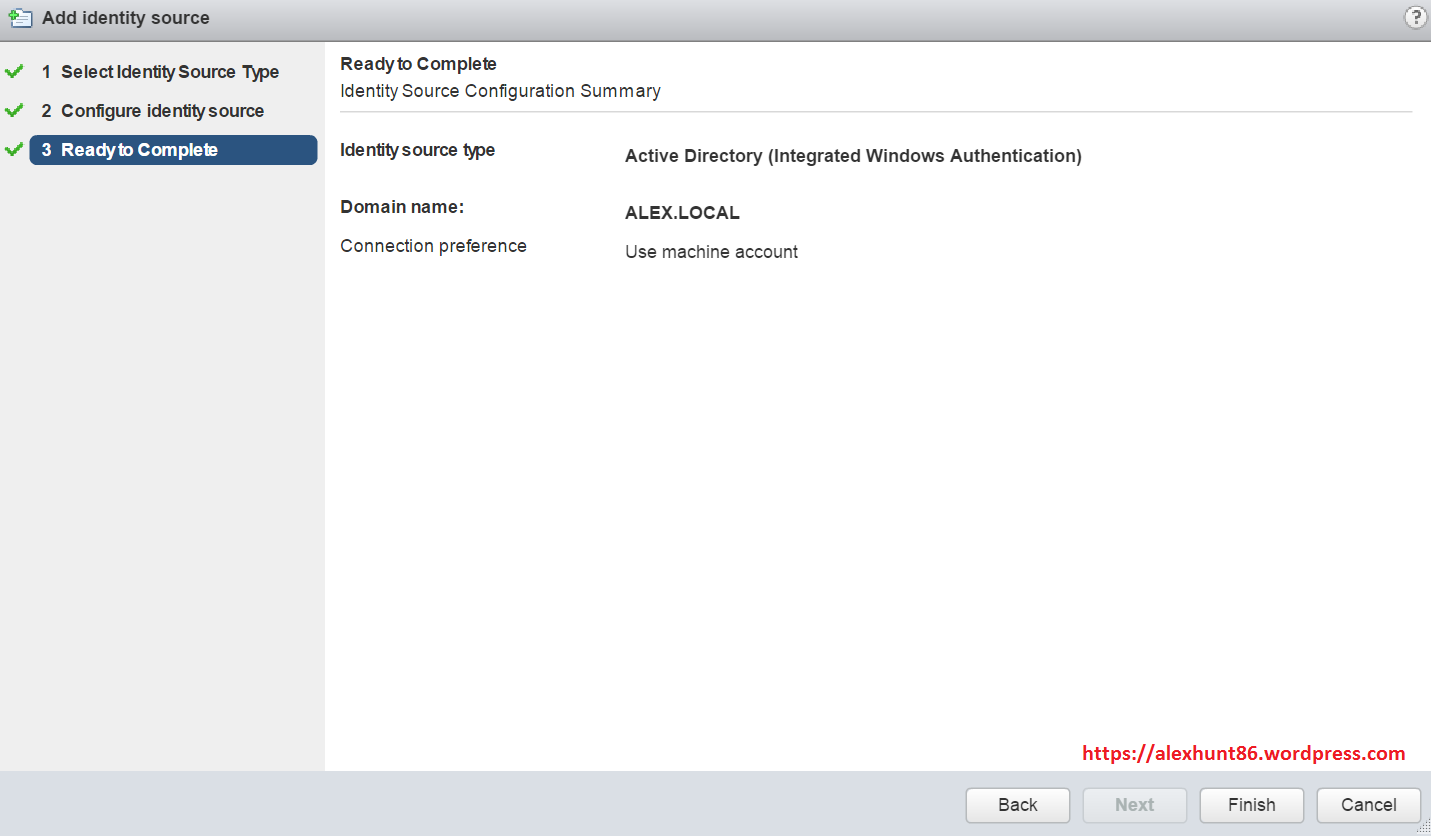
36: Now under Global permissions hit + button to provide access to your domain users on this vCSA instance.

37: Click on Add button to start adding the user/users and assign appropriate role to the user.
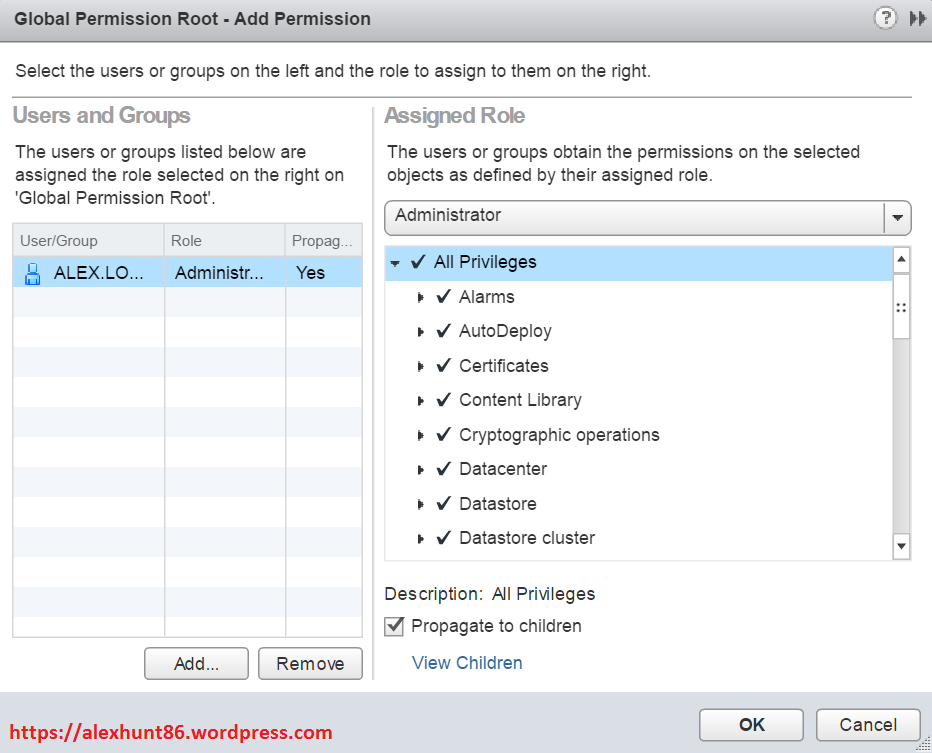
And that’s it. Now we can login to vCSA using the ad account which were added in previous step.
I hope this post is informational to you. Feel free to share this on social media if it is worth sharing.

7 thoughts on “Learning vSphere 6.5-Part-6-Deploying vCSA with embedded PSC”